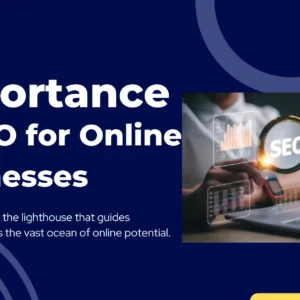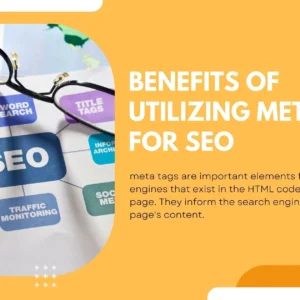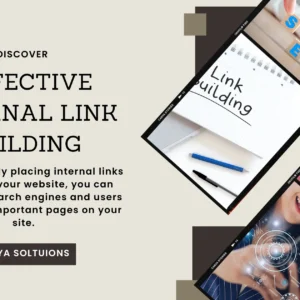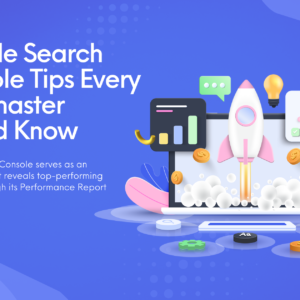Step into the dynamic world of On-Page SEO. A place where your digital presence transforms from a whisper to a resounding shout in the vast online landscape. Imagine your website as a captivating story waiting to be told, and On-Page SEO serves as the masterful storyteller. On-page SEO best practices also ensure that search engines and eager readers alike are hooked from the very first line.
Think of On-Page SEO as your website’s charisma. The magnetic force that draws search engine attention and captivates human hearts. We won’t be throwing confusing tech jargon at you; it’s all about making your website the talk of the town. On-page SEO is like a superhero cape in SEO and digital marketing. It helps your website get noticed by both search engines and regular folks just browsing the internet.
Get ready for a journey through the compelling universe of On-Page SEO best practices. It’s time to empower your digital narrative, amplify your online presence, and leave an indelible mark on the web.
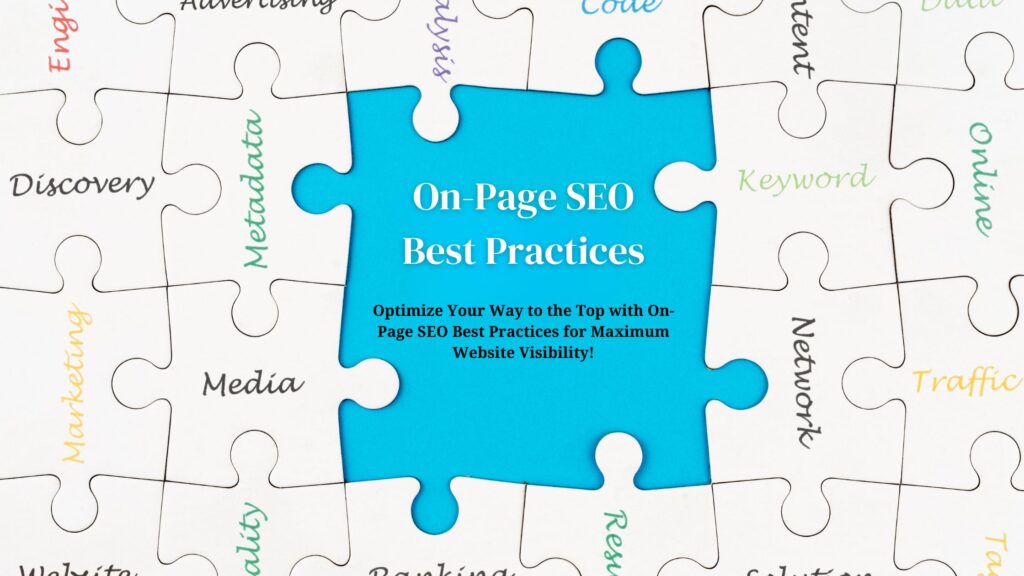
Details of On-Page SEO:
On-page SEO refers to optimizing your website for search engine results. It entails making changes to your website to increase its ranking in search engine results. This is significant because, when people search online, you want your site to be easily found. On-page SEO differs from off-page SEO, which involves things like links from other websites.
On-page SEO focuses on employing the right keywords, making your material easy to read, and properly arranging your website. This helps search engines comprehend what your website is about. It’s like speaking a language that search engines comprehend. They can recommend your site to others looking for similar information. It is critical to stay up to date on how search engines operate because the rules are constantly changing. By performing SEO and digital marketing, you enhance your chances of appearing higher in search results. Hence make it easier for visitors to find your website.
Meta Tags Optimization:
Meta tags for SEO are small pieces of text that inform search engines and users about the content of your webpage. First, you have your meta titles. These are brief, appealing names that contain keywords relevant to your content. Consider them to be the book’s headline; they must capture the reader’s attention. Then, there are meta descriptions, which provide concise summaries of the page’s content. It’s like a teaser to persuade them to click.
The idea is to make them educational and engaging. And here’s the deal: each page requires its unique meta tags. This helps search engines recognize that your pages are unique and worthwhile. So, when it comes to your website’s exposure, mastering the meta tags in SEO and digital marketing is like giving it an advantage in the search engine popularity fight.
Header Tags Hierarchy:
Headers function similarly to page titles and subtitles used in SEO and digital marketing. They assist search engines in determining what your content is about and how significant each section is. This can affect how high your website ranks in search results.
1. The role of headers (H1, H2, H3, etc.) in on-page SEO:
Headers, like H1, H2, and H3, act like the roadmap of your content, guiding both readers and search engines through your page. The H1 tag is like the main title – it’s the big deal that summarizes your entire page. Then, you’ve got H2 tags, which are like section titles, breaking down your content into smaller, digestible chunks. H3 tags go even further, diving into subsections. This hierarchy creates a structured and organized layout. It makes it easier for search engines to grasp your content’s flow and relevance.
2. Proper hierarchy and structure for headers:
Both search engine crawlers and human readers rely on a suitable header hierarchy and organization. The H1 tag is normally designated for a page’s main title or header, which represents the principal focus or topic. Subsequent headings, such as H2, H3, and so on, should be used to divide the material into sections and subsections. This hierarchical method improves comprehension of the content’s organization and relevancy.
3. Integrating target keywords within headers:
Maintaining a clear and logical structure not only benefits SEO and digital marketing but also enhances the accessibility of the content for users. When headers are appropriately structured, it becomes easier for visitors to navigate the page, locate relevant information, and understand the overall theme of the content.
Integrating target keywords within headers is a strategic practice to optimize content for search engines. Placing primary keywords in the H1 tag signals the main topic of the page, reinforcing its relevance to search engine algorithms. Subsequent headers can then include variations or related keywords, creating a comprehensive semantic structure that further enhances SEO.
Content Optimization Strategies:
Creating content that people find useful and interesting is really important in SEO and digital marketing. It’s not just about using fancy words; it’s about sharing information that matters to your audience. One key thing to do is to find the right words that people often use when searching for information; these are called keywords. But be careful not to use them too much; it can make your writing hard to understand. You want to strike a balance so that your content is easy to read and also shows up in search results.
Another cool trick is to use pictures and videos in your content. People love visuals, and it makes your content more exciting. It could be a helpful graph, a funny meme, or a short video that explains your point. These things not only make your content more enjoyable but also help people understand your message better.
When you’re creating content for the internet, make sure it’s good quality and relevant to what people are looking for. Use keywords wisely, not too much, and add some cool pictures or videos to make it even better. This way, your content will stand out in the online crowd and be more likely to be seen and appreciated by others.
Image Optimization Techniques:
Making your website work better involves doing a few things with your pictures. This requires Image SEO Optimization. First off, you want to make them smaller without losing quality so your site loads faster. Think of it like squishing a big balloon to fit through a small door—it gets through quicker. This helps people using your site because they don’t have to wait too long for things to show up.
Another thing is adding simple words to describe your pictures, called alt text. This is like giving your pictures a little name or telling a story about them. This helps folks who can’t see so well understand what’s in the pictures, and it’s also good for search engines to figure out what your site is all about. So, if you have a picture of a cute dog, the alt text could say, “Happy dog playing in the park,” and that helps everyone understand what’s happening in the picture. When you save your pictures, give them names that make sense.
If your picture is about a sunny beach day, name it something like “sunny_beach_day.jpg.” This helps search engines figure out what’s in the picture. It makes your website more likely to show up when people search for things related to sunny beach days. So, by doing these simple things in SEO and digital marketing, you make your website faster, friendlier, and easier to find on the internet.
URL Structure and Permalinks:
Making your website show up better on search engines is easier with SEO and digital marketing. You need to pay attention to how your web addresses (URLs) look. It’s like giving your pages an easy-to-understand name. First, it’s a good idea to include words in the URL that people might search for, like “healthy-recipes” if your page is about that. This helps search engines know what your page is about.
Keep your URLs simple and easy to read. Use regular words and avoid using numbers or strange symbols. Also, it’s better to use hyphens between words instead of underscores because search engines like it that way. Think about how your website is organized and reflect that in your URLs. If you have different sections, make your URLs show that structure. For example, if you have a part about technology in your blog, your URL could be like “yourwebsite.com/blog/technology/article-title.” This not only helps people find things on your site but also makes search engines understand your content better.
So, in simple terms, make your web addresses clear and relevant by using keywords, keeping them easy to read, and logically organizing them. This way, your website becomes more friendly to both people and search engines, making it easier for others to find what they’re looking for.
Internal Linking Strategies:
Internal link building is like connecting the dots within your website. It’s pretty important for making your site work well on search engines. When we talk about internal linking, it means creating links from one page of your site to another. This helps search engines understand your website better and can improve its ranking. Let’s break it down a bit.
Internal linking is like a roadmap for search engines in SEO and digital marketing. When one page of your site links to another, it’s like saying, “Hey, these two pages are connected.” This connection helps search engines figure out what each page is about and how they relate to each other. So, when someone searches for something related to your content, your site has a better chance of showing up. When you’re creating these links, pay attention to the words you use. These are called anchor texts. Instead of using generic terms like “click here,” try to use words that tell people and search engines what the linked page is about. For example, if you’re linking to a page about healthy snacks, your anchor text could be “best healthy snacks.”
Think about creating a logical and user-friendly structure with your internal links. This means making it easy for visitors to navigate your site. If you have a blog post about fitness and another one about healthy recipes, you can link them together. This not only helps users find related content but also guides search engines to understand the topics your website covers.
Mobile Optimization:
As more people use smartphones to access the internet, having a mobile-friendly website is becoming vital. When your website functions well on mobile devices, visitors may access and interact with your content from their phones or tablets. This is critical because, let’s face it, many of us are on the go, and we want websites that are simple to use no matter what device we’re using.
Responsive design is important for making your website appear well on both PCs and mobile devices. This implies that your site adapts to various screen sizes. It will make it easy to navigate and read whether someone is using a large computer screen or a small phone screen. Google and other search engines prefer responsive design because it makes your website more adaptable. Due to this, they are rewarded with higher positions in search results.
When optimizing material for smartphones, keep it simple and easy to read. Break up long sections of content. Also, use clear headings and select fonts that are easier to read on smaller displays. Also, make sure the buttons and links are large enough to tap without touching the wrong item. Providing a seamless and pleasurable experience for mobile users is critical.
Page Loading Speed:
Think of your website like a race car—the faster it goes, the better it performs. The speed at which your web pages load is super important for how well your site shows up in search results. Search engines, like Google, like websites that load quickly because it means people can find what they’re looking for faster. So, if your site is a speedster, it gets a higher ranking.
To make your website faster, you can do a few things. Imagine pictures on your site like heavy luggage – if you make them a bit smaller (but still good quality), your pages will load quickly. Also, don’t overload your site with too many extra things, like plugins or scripts. They can slow things down. Use tools like Google’s PageSpeed Insights, GTmetrix, or Pingdom to see how fast your site is and get suggestions on how to make it even faster.
A fast website is a happy website. It’s good for people because they find what they need quickly, and it’s good for search engines because they like sending people to speedy sites. So, think of it like tuning up your race car to zoom ahead in the online race!
Regular Content Audits and Updates:
Regular content audits and revisions are important for ensuring that your online presence remains relevant and effective. Keeping content current is important for a variety of reasons. It includes SEO, audience engagement, and believability.
Here’s an outline of the importance of maintaining fresh material. It conducts regular audits and has ideas for updating and repurposing current content:
1. The significance of keeping content fresh:
Regular content audits and changes are essential for keeping a website relevant and successful. In today’s ever-changing digital market, keeping content fresh means more than just being current. It has a direct influence on user engagement, search engine rankings, and brand trustworthiness. Fresh, up-to-date material not only attracts and retains visitors but also indicates a dedication to delivering useful information.
2. Conducting regular audits to identify outdated content:
Conducting periodic audits is a proactive way to uncover obsolete material in a digital environment. These audits entail a comprehensive assessment of existing content to ensure its accuracy, relevancy, and compatibility with current industry trends or corporate messages. Businesses may maintain a trustworthy web presence by identifying old or obsolete information. Content audits aid in finding gaps, duplications, and areas for improvement in the content strategy.
3. Strategies for updating and repurposing existing content:
To get the most out of content audits, businesses should find simple ways to update and reuse old information. This means not only fixing outdated stuff but also coming up with new ways to share and use valuable knowledge. You can do this by adding new facts or numbers, improving pictures, and making sure your content follows the latest SEO trends. Also, try using the same information in different ways, like turning a blog post into a video or creating infographics. This makes your content reach more people and makes it easier for them to understand. Businesses that use these tricks can make the most of their old content, adapting to what their audience likes and needs. Keeping information up-to-date and using it in different ways isn’t just a good idea; it’s a smart strategy to stay visible, trustworthy, and interesting online.
Conclusion:
Mastering on-page SEO best practices is an important step in SEO and digital marketing. It is meant for anybody looking to improve their website’s visibility and user experience. By focusing on features like keyword optimization, high-quality content, and suitable HTML tags, you can help search engines comprehend and rank your sites. Remember that it is not enough to please algorithms. You must also provide quality, relevant content that connects with your target audience.
Consistency is key, so update and refresh your content to stay relevant in search engine results. Focus on the user experience by making sure your website is mobile-friendly, easy to use, and loads rapidly. Embracing on-page SEO is about more than simply ranking better. It is also about providing your visitors with a seamless and delightful experience.
Following these recommended practices not only increases the odds of your site getting discovered but also improves its quality. So, invest time in learning and executing on-page SEO tactics to not only please search engines but also deliver true value to your audience. It will ensure long-term success for your online presence.


